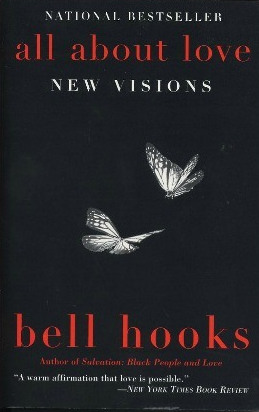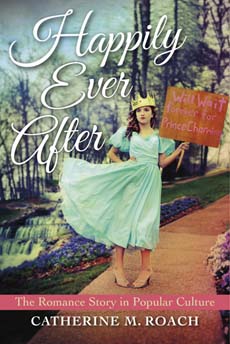An f/f/m romance from 1896?
This is a novel which I've only just discovered but which sounds like it should be better known to romance scholars:
Better known to history by her married name, Katharine Bruce Glasier, and remembered for her activism on behalf of the British labor movement rather than as a novelist or short story writer, Katharine St. John Conway published Aimée Furniss, Scholar in 1896. Her eponymous heroine is a middle-class schoolteacher who awakens to the need for radical, class-based social change when she witnesses a drunken itinerant carpenter’s violence toward his pregnant wife on the street outside her rented rooms. After a working-class girl in her own community is jilted by her gentleman lover, Aimée “marries” Annie Deardon in a sequence of scenes that invokes north-of-England regional folk traditions of courtship, high church marriage rituals, and a Biblical allusion to David’s love for King Saul. Aimée then gives up her teaching post and moves to a working-class seaside community with this young girl, making her commitment to the welfare of Annie and her illegitimate child both a stepping stone toward and a condition of her heterosexual partnership with a socialist comrade, Edgar Howardson, at the novel’s conclusion. (Ardis para. 7)
One can definitely spot similarities between Aimée and Katharine herself: Edith Hall refers to Aimée as a "strongly autobiographical heroine" and gives details of Glasier's relationship with Enid Stacy: "With Katharine, she [...] tried to found a co-operative colony near Kendal in the Lake District, where work and food would be equally shared amongst the previously unemployed and homeless. But the project was sabotaged by the local vicar, and so Enid devoted herself to campaigning for socialism and the rights of women." I'm not sure about the chronology, but Hall also mentions that
Katharine [...], in 1892 resigned her post at Redland High School, and moved out of her genteel lodgings into the extended household of Dan Irving. He was a political activist who had lost one leg in a shunting accident while working on the railways in the Midlands. Leaving the safety of her genteel social circle to embrace the life of an agitator for the working class was a huge and risky step. There were also ambiguities surrounding her relationship with Irving and his invalided wife.
Some facts which are not ambiguous are that Glasier was
born in 1867 [...] she came from a politically active and religious middle-class family. After reading classics at Newnham College, Cambridge, she secured a teaching position at the Redland School for Girls in Bristol [...]. As a popular speaker on the socialist circuit, she met Isabella Ford, and the two established a lifelong friendship. In 1893, the year she married John Bruce Glasier, she was elected to the National Administrative Council of the Independent Labour Party. Determined not to let her marriage interfere with her propaganda and literary work, she once wrote to her husband that their mutual efforts on behalf of the socialist cause must be seen "as the reason and justification of our marriage." [...] Glasier [...] wrote a number of romances for the popular weekly Family Herald. (Waters 32)
Here's a bit more about Katharine's lifelong friend, Isabella Ford:
Ford's insight into the threat that marriage posed to women's friendships (Ford herself never married) is eloquently conveyed [by a character in one of her novels] Lucretia, who notes, "Women's lives are so cut up when they marry" (Waters 35)
Also, Glasier and her work weren't just influenced by ideas about socialism:
Glasier had also come to appreciate the importance of Walt Whitman's vision of democratic comradeship through her friendship with Edward Carpenter, a socialist and pioneer of homosexual rights, and an emphasis on comradeship thus occupies a prominent place in her second novel [Aimée Furniss]. After embracing the cause of socialism, Aimée meets Annie Deardon, a shopgirl who has lost her job and for whom she develops an intense fondness. Together they move to a village in the South where they read Whitman, Percy Bysshe Shelley, Giuseppe Mazzine, and William Morris and work as intimate comrades to spread the socialist gospel: "Slowly a new hunger grew up with them and a new hope" (124) [...] their union cements the cross-class alliance that both Ford and Glasier called for, an alliance that, in Aimée Furniss, subverts the heterosexual imperative of much New Woman fiction and opens up a space for women to support each other's ambitions. (36)
I haven't read the book, but I'm definitely beginning to think that the phrase "a new hunger grew up with them" might not solely refer to socialism. Ann Ardis concludes that
Though it certainly seems appropriate to employ a contemporary language of lesbianism to describe the emotional and physical intensity of Aimée’s relationship with Annie, calling Aimée Furniss a lesbian novel does not do justice either to the heterosexual marriage plot that frames St. John Conway’s text or to the mixed gender, cross-class collective assembled at its conclusion, which includes Aimée, Annie Deardon, Annie’s illegitimate child, Aimée’s socialist lover, the carpenter who beat his pregnant wife in the novel’s opening scene, and the working-class orphans that Aimée’s lover has taken into his care. Likewise, calling this a New Woman novel does not quite do justice to Conway’s emphasis on her protagonist’s renunciation of middle-class individualism, or to the religious and ethical dimensions of the socialist collectivism this novel is trying to imagine. Nor does it capture Conway’s sense of confidence in the inevitability of a revolution in class relations, or the rethinking of same-sex as well as hetero-sexual gender relations that she links inextricably to this kind of seismic shift in class relations. (paragraph 9)
Ardis mentions "challenges that Diana Maltz is facing currently in trying to get Katharine St. John Conway’s 1896 novel, Aimée Furniss, Scholar, back in print" (paragraph 6) and presumably the challenges were too great because, unfortunately, I can't see any trace of a recent edition.
---
Ardis, Ann, 2007. 'Landscape for a New Woman; or, Recovering Katharine St. John Conway, “Michael Field,” and “the author of Borgia”', Nineteenth-Century Gender Studies 3.2.
Hall, Edith. 2015. 'Classically Educated Women in the Early Independent Labour Party', Greek and Roman Classics in the British Struggle for Social Reform, ed. Henry Stead and Edith Hall. London: Bloomsbury. 197-215. [See the pre-print version here]
Waters, Chris, 1993. 'New Women and Socialist-Feminist Fiction: The Novels of Isabella Ford and Katharine Bruce Glasier', Rediscovering Forgotten Radicals: British Women Writers 1889-1939. Ed. Angela Ingram and Daphne Patai. Chapel Hill: The University of North Carolina Press. 25-42.

 A snippet from bell hooks' All About Love: New Visions (2000):
A snippet from bell hooks' All About Love: New Visions (2000): I've been reading Catherine Roach's
I've been reading Catherine Roach's  Roach distinguishes between what happens in healthy relationships and what happens when
Roach distinguishes between what happens in healthy relationships and what happens when